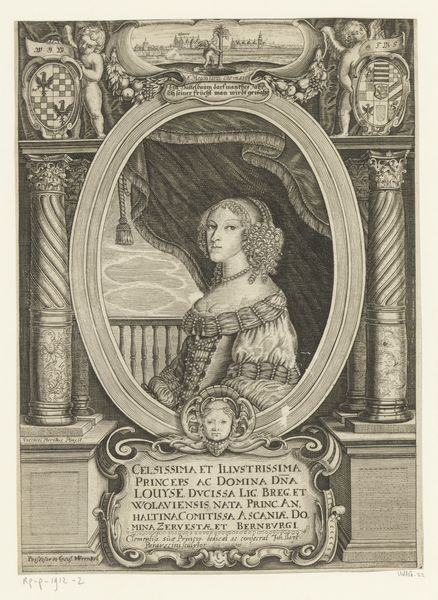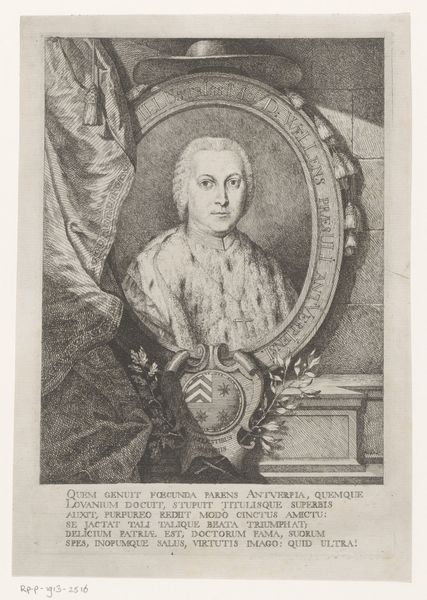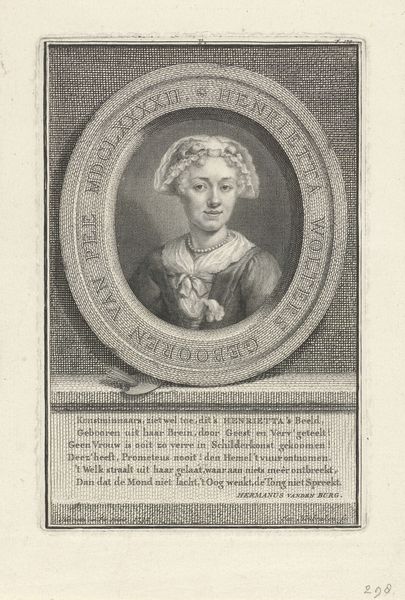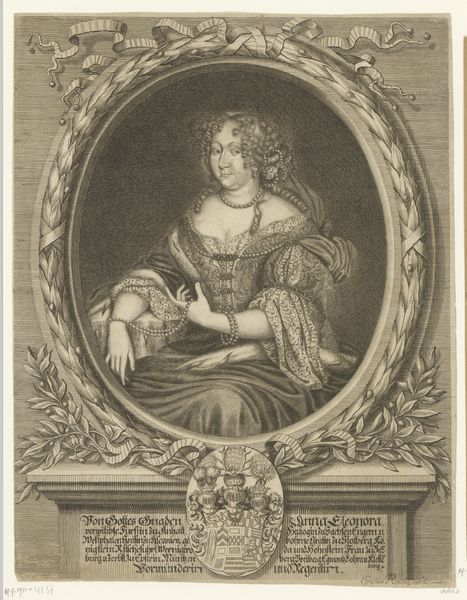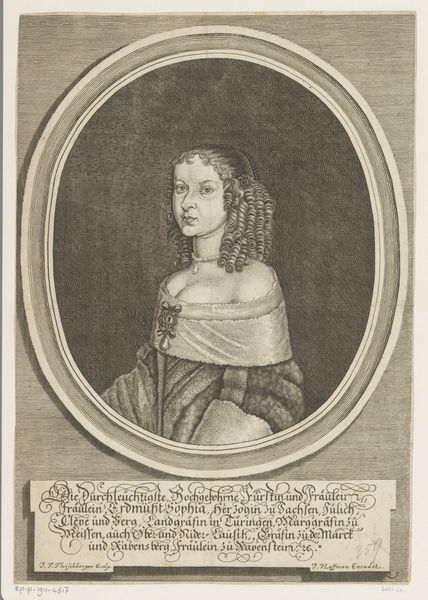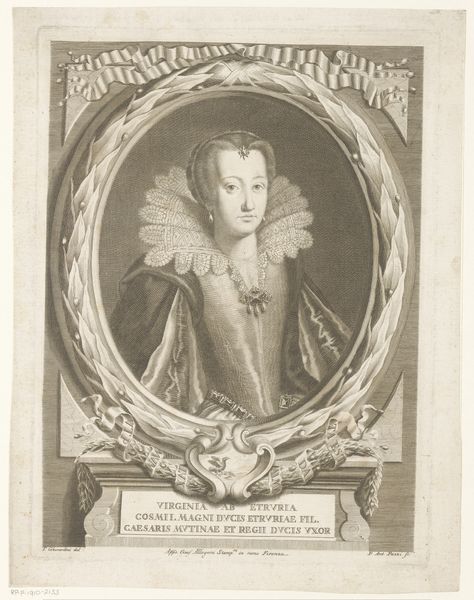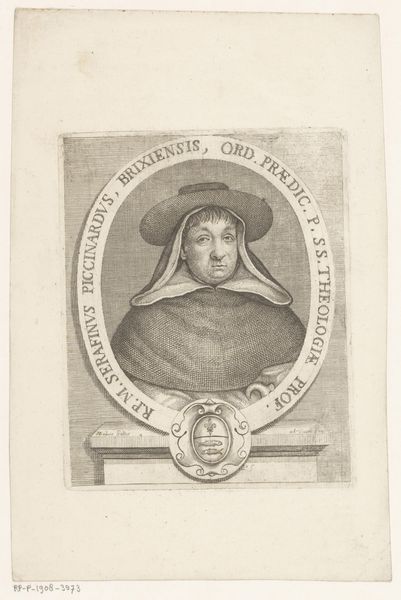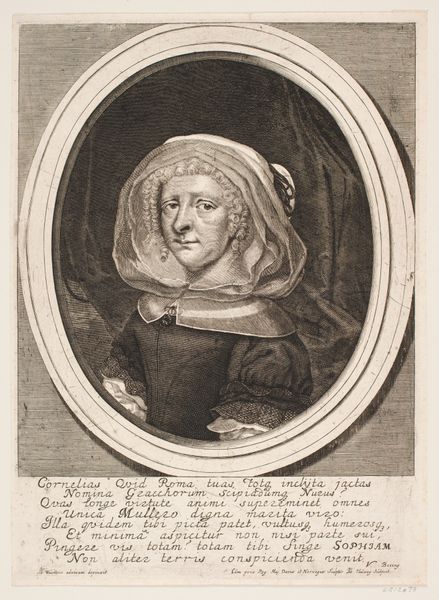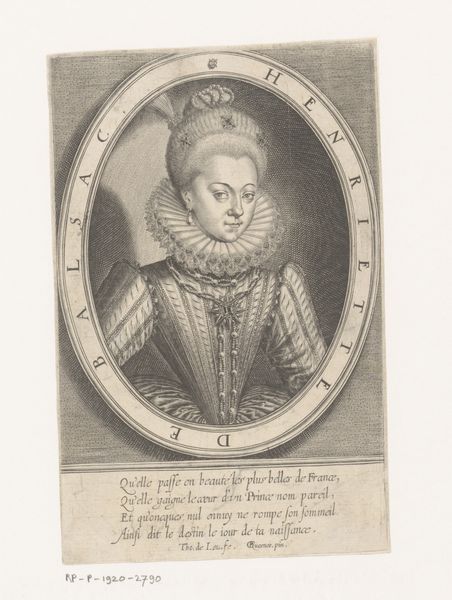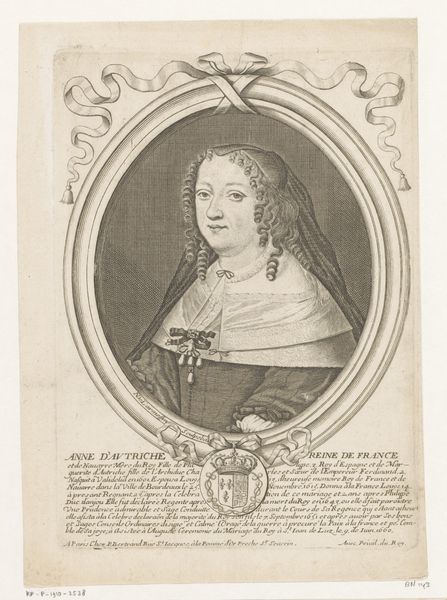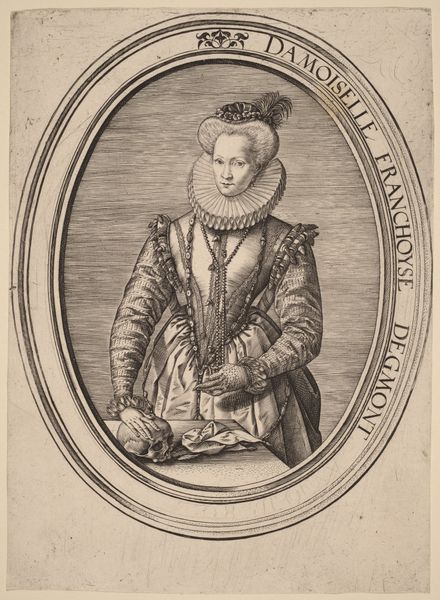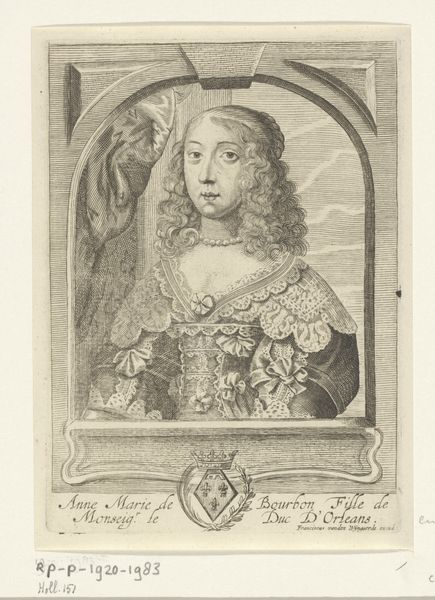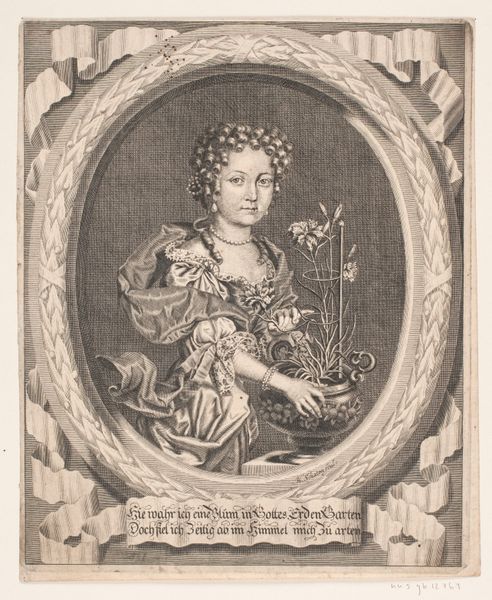
engraving
#
portrait
#
baroque
#
old engraving style
#
caricature
#
portrait drawing
#
engraving
Dimensions: height 291 mm, width 189 mm
Copyright: Rijks Museum: Open Domain
Johann Christoph Boecklin created this portrait of Anna Zander in the late 17th century, using etching and engraving. These techniques, involving the precise and controlled removal of material from a metal plate, allowed for the creation of detailed images and the reproduction of prints. The material presence of this print is subtle, yet significant. Lines etched into the metal create texture and depth, capturing the likeness and status of Anna Zander. Look closely, and you can see the crisp lines, rendered through labor and skill, have imbued the artwork with a sense of dignity. The choice of printmaking as a medium speaks to the cultural and social context of the time. Prints enabled wider dissemination of images beyond an elite circle, reflecting shifts in artistic production and consumption. The techniques and processes reflect a skilled tradition, tied to wider social issues of labor and politics. The combination of materials, processes, and context reveals the intricate relationship between art, craft, and society, reminding us that meaning lies not only in what is depicted, but how it is made.
Comments
No comments
Be the first to comment and join the conversation on the ultimate creative platform.
